In the highly competitive subcompact SUV segment, the Kia Stonic and VW T-Cross stand out as two strong contenders. Both offer unique features, enticing designs, and an impressive array of technology and performance. In this article, we will compare these two models based on their technical specifications, innovations, and overall user experience.
Kia Stonic vs VW T-Cross – Differences & prices compared
Both models have their strengths – but which one suits you more?
Compare performance, efficiency, price and space directly: Kia Stonic or VW T-Cross?
Design and Dimensions
The Kia Stonic boasts a sleek and sporty design characterized by its bold front grille, stylish LED headlights, and a compact stance. Measuring 4140 mm in length and 1760 mm in width, the Stonic has an assertive road presence complemented by a height of 1505 mm. Meanwhile, the VW T-Cross presents a more robust and practical design. With slightly larger dimensions of 4127 mm in length, 1784 mm in width, and a height of 1573 mm, the T-Cross provides a higher driving position, enhancing visibility for the driver.
Powertrain Options
The Kia Stonic is equipped with a choice of petrol engines, including a 1.0-liter 3-cylinder with outputs of 100 HP and 79 HP and a larger 1.2-liter 4-cylinder engine. In terms of performance, it offers acceleration from 0-100 km/h in 11.3 seconds for the 100 HP variant, while the fuel consumption ranges from 5.5 to 5.8 L/100km. The T-Cross, on the other hand, features a more diverse engine lineup with petrol options including a 1.0-liter engine producing 95 HP and a more powerful 1.5-liter variant generating up to 150 HP. The T-Cross achieves acceleration in just 8.4 seconds, indicative of its sporty character, while maintaining a competitive fuel efficiency of 5.6 to 6 L/100km.
Transmission and Handling
Both the Stonic and T-Cross offer manual and automatic transmission options, ensuring a driving experience that caters to different preferences. The Stonic features a manual gearbox as well as an automatic dual-clutch transmission, providing smooth and responsive gear changes. On the other hand, the T-Cross excels with its advanced DSG transmission, enhancing acceleration and efficiency while offering a more engaging driving experience.
Interior Comfort and Features
Inside, the Kia Stonic provides ample space for five passengers with a trunk capacity of 352 liters, which is sufficient for daily use. The dashboard is well-equipped with modern connectivity features, including a touchscreen infotainment system compatible with Apple CarPlay and Android Auto. In contrast, the VW T-Cross shines with its spacious interior and impressive trunk capacity of 455 liters. The cabin also features high-quality materials and a modern layout, including a digital cockpit option that enhances the driving experience.
Safety and Innovations
Safety is a priority for both manufacturers, with the Stonic offering a robust suite of safety features such as electronic stability control, traction control, and advanced driver-assistance systems. The T-Cross also excels in this area, featuring similar safety technologies alongside optional predictive cruise control and emergency braking, further enhancing its appeal to safety-conscious buyers.
Conclusion: Choosing the Right Small SUV
In conclusion, both the Kia Stonic and VW T-Cross bring unique strengths to the table. The Stonic stands out with its sporty design and efficient performance, making it a great fit for urban environments. Meanwhile, the T-Cross offers a larger interior, enhanced performance options, and superior technology, making it a compelling choice for families and those who prioritize space. Ultimately, the decision will hinge on personal preferences regarding style, performance, and practicality in the ever-evolving subcompact SUV landscape.
Here’s where it gets real: The technical differences in detail
Costs and Efficiency:
Looking at overall running costs, both models reveal some interesting differences in everyday economy.
Kia Stonic has a barely noticeable advantage in terms of price – it starts at 20100 £, while the VW T-Cross costs 21100 £. That’s a price difference of around 943 £.
Fuel consumption also shows a difference: VW T-Cross manages with 5.40 L and is therefore barely noticeable more efficient than the Kia Stonic with 5.60 L. The difference is about 0.20 L per 100 km.
Engine and Performance:
Power, torque and acceleration say a lot about how a car feels on the road. This is where you see which model delivers more driving dynamics.
When it comes to engine power, the VW T-Cross has a noticeable edge – offering 150 HP compared to 115 HP. That’s roughly 35 HP more horsepower.
In acceleration from 0 to 100 km/h, the VW T-Cross is evident quicker – completing the sprint in 8.40 s, while the Kia Stonic takes 10.70 s. That’s about 2.30 s faster.
In terms of top speed, the VW T-Cross performs hardly perceptible better – reaching 200 km/h, while the Kia Stonic tops out at 182 km/h. The difference is around 18 km/h.
There’s also a difference in torque: VW T-Cross pulls slightly stronger with 250 Nm compared to 200 Nm. That’s about 50 Nm difference.
Space and Everyday Use:
Beyond pure performance, interior space and usability matter most in daily life. This is where you see which car is more practical and versatile.
Both vehicles offer seating for 5 people.
In curb weight, Kia Stonic is barely noticeable lighter – 1205 kg compared to 1267 kg. The difference is around 62 kg.
In terms of boot space, the VW T-Cross offers noticeable more room – 455 L compared to 352 L. That’s a difference of about 103 L.
In maximum load capacity, the VW T-Cross performs hardly perceptible better – up to 1281 L, which is about 126 L more than the Kia Stonic.
When it comes to payload, VW T-Cross hardly perceptible takes the win – 480 kg compared to 445 kg. That’s a difference of about 35 kg.
Who comes out on top?
Overall, the VW T-Cross shows itself to be outperforms in nearly all aspects and secures the title of DriveDuel Champion.
It convinces with the more balanced overall package and proves to be the more versatile choice for everyday use.
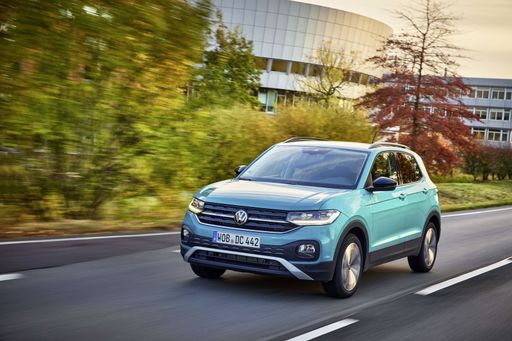 @ Volkswagen AG / VW Media
@ Volkswagen AG / VW Media
VW T-Cross
Kia Stonic
The Kia Stonic is a sprightly compact crossover that mixes city-friendly agility with a cheeky, modern design — perfect for buyers who want style without sacrificing sense. Inside it serves up clever practicality and a bright, well-equipped cabin, making everyday driving feel a bit more fun than it has any right to be.
details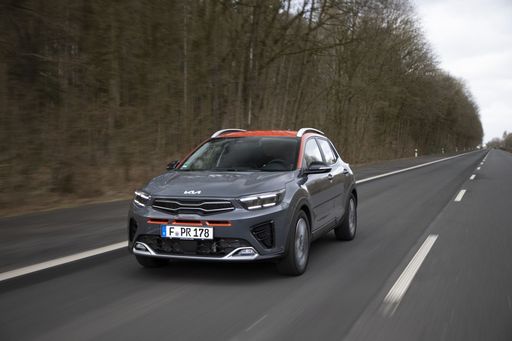 @ Kia Corporation
@ Kia Corporation
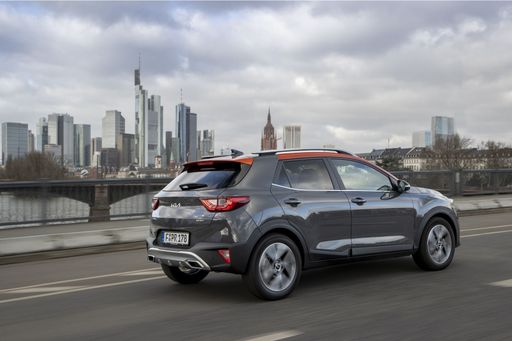 @ Kia Corporation
@ Kia Corporation
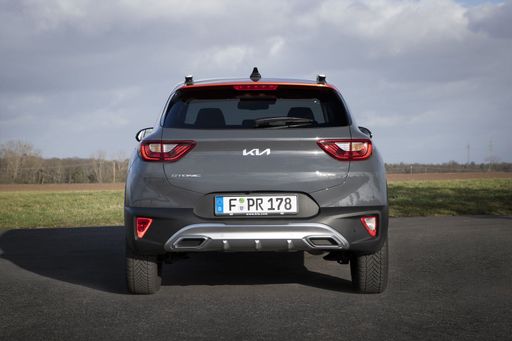 @ Kia Corporation
@ Kia Corporation
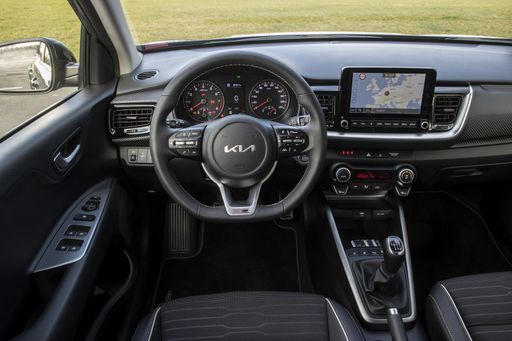 @ Kia Corporation
@ Kia Corporation
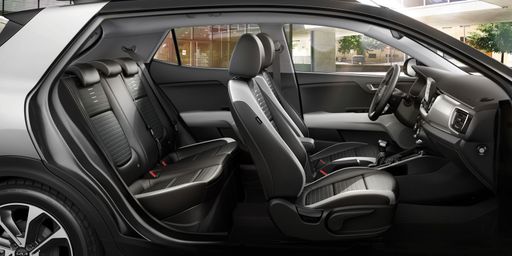 @ Kia Corporation
@ Kia Corporation
VW T-Cross
The VW T-Cross turns everyday practicality into a style statement, offering a roomy-feeling cabin, clever storage and playful design that suits town life and family duties alike. On the road it's composed and relaxed, rewarding buyers who want the raised seating and confident presence of an SUV without the weighty compromises.
details @ Volkswagen AG / VW Media
@ Volkswagen AG / VW Media
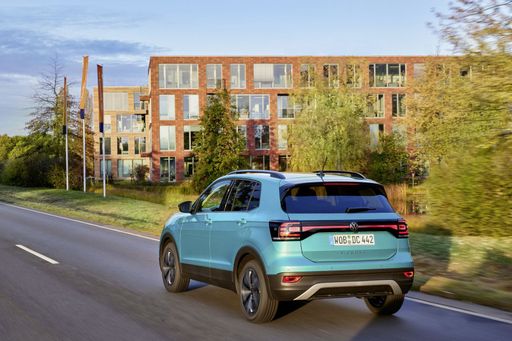 @ Volkswagen AG / VW Media
@ Volkswagen AG / VW Media
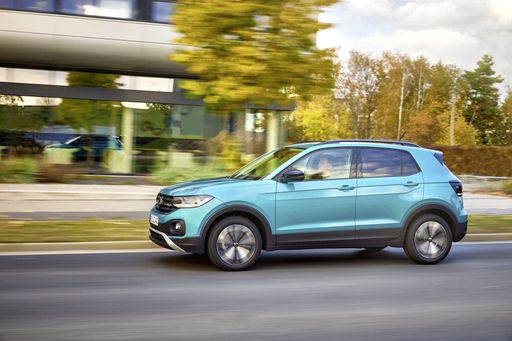 @ Volkswagen AG / VW Media
@ Volkswagen AG / VW Media
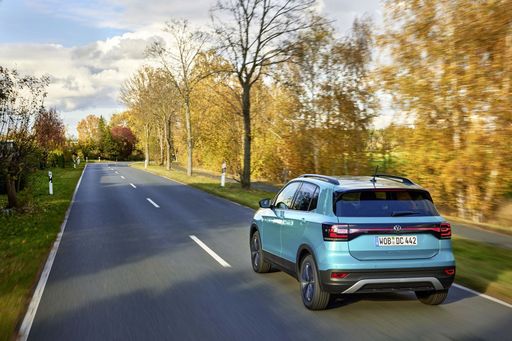 @ Volkswagen AG / VW Media
@ Volkswagen AG / VW Media
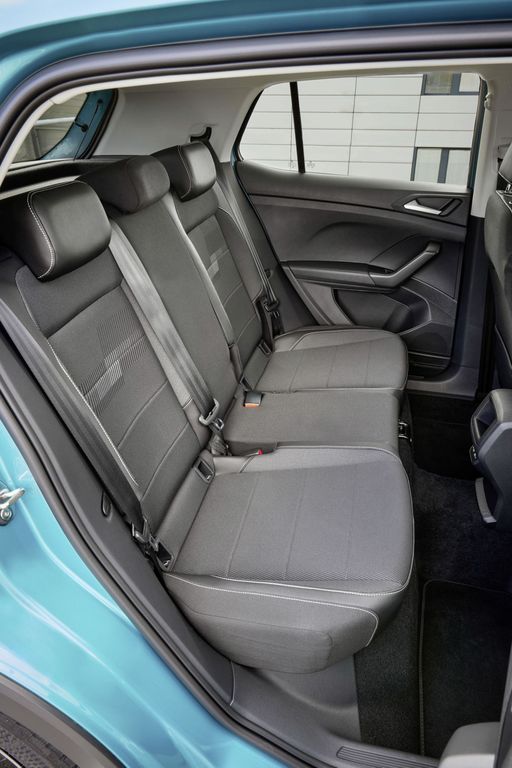 @ Volkswagen AG / VW Media
@ Volkswagen AG / VW Media
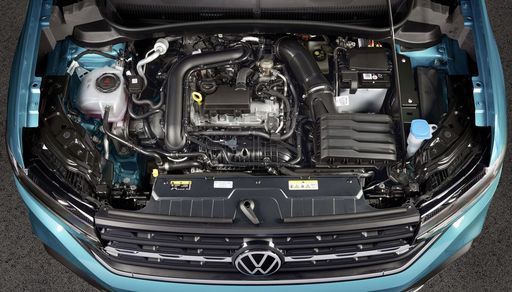 @ Volkswagen AG / VW Media
@ Volkswagen AG / VW Media
 @ Kia Corporation
@ Kia Corporation
|
 @ Volkswagen AG / VW Media
@ Volkswagen AG / VW Media
|
|
|
|
Costs and Consumption |
|
|---|---|
|
Price
20100 - 26600 £
|
Price
21100 - 31500 £
|
|
Consumption L/100km
5.6 - 5.9 L
|
Consumption L/100km
5.4 - 6 L
|
|
Consumption kWh/100km
-
|
Consumption kWh/100km
-
|
|
Electric Range
-
|
Electric Range
-
|
|
Battery Capacity
-
|
Battery Capacity
-
|
|
co2
127 - 133 g/km
|
co2
124 - 136 g/km
|
|
Fuel tank capacity
45 L
|
Fuel tank capacity
40 L
|
Dimensions and Body |
|
|---|---|
|
Body Type
SUV
|
Body Type
SUV
|
|
Seats
5
|
Seats
5
|
|
Doors
5
|
Doors
5
|
|
Curb weight
1205 - 1270 kg
|
Curb weight
1267 - 1338 kg
|
|
Trunk capacity
352 L
|
Trunk capacity
455 L
|
|
Length
4165 mm
|
Length
4127 mm
|
|
Width
1760 mm
|
Width
1784 mm
|
|
Height
1520 mm
|
Height
1573 mm
|
|
Max trunk capacity
1155 L
|
Max trunk capacity
1281 L
|
|
Payload
440 - 445 kg
|
Payload
463 - 480 kg
|
Engine and Performance |
|
|---|---|
|
Engine Type
Petrol, Petrol MHEV
|
Engine Type
Petrol
|
|
Transmission
Manuel, Automatic
|
Transmission
Manuel, Automatic
|
|
Transmission Detail
Manual Gearbox, Dual-Clutch Automatic
|
Transmission Detail
Manual Gearbox, Dual-Clutch Automatic
|
|
Drive Type
Front-Wheel Drive
|
Drive Type
Front-Wheel Drive
|
|
Power HP
100 - 115 HP
|
Power HP
95 - 150 HP
|
|
Acceleration 0-100km/h
10.7 - 12.1 s
|
Acceleration 0-100km/h
8.4 - 11.3 s
|
|
Max Speed
179 - 182 km/h
|
Max Speed
180 - 200 km/h
|
|
Torque
172 - 200 Nm
|
Torque
175 - 250 Nm
|
|
Number of Cylinders
3
|
Number of Cylinders
3 - 4
|
|
Power kW
74 - 85 kW
|
Power kW
70 - 110 kW
|
|
Engine capacity
998 cm3
|
Engine capacity
999 - 1498 cm3
|
General |
|
|---|---|
|
Model Year
2025
|
Model Year
2024 - 2025
|
|
CO2 Efficiency Class
D
|
CO2 Efficiency Class
D, E
|
|
Brand
Kia
|
Brand
VW
|
Is the Kia Stonic offered with different drivetrains?
The Kia Stonic is offered with Front-Wheel Drive.
The prices and data displayed are estimates based on German list prices and may vary by country. This information is not legally binding.
